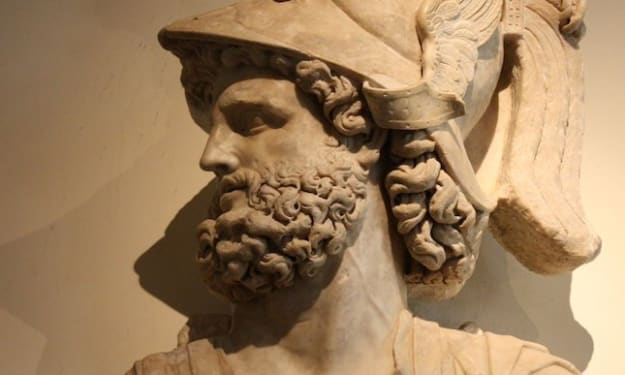History of the 40 Martyrs of Sebaste
Roman Empire vs. Christian Soldiers

A curious occurrence happened in the early 4th century Roman Empire. The early church historian Bishop Eusebius tells the story of the Roman Emperor Constantine, who, before a battle against his rival Emperor Maxentius in 312 AD at the Milvian Bridge outside of Rome, had either a dream or vision that he was to conquer in the sign of Christ.

Explaining this to his troops, they made a battle standard of the Greek letters chi and rho, the first two letters of Christ in Greek, and were victorious. Constantine converted to Christianity and, in 313 AD, put into law the Edict of Milan, making Christianity a legitimate religion with toleration toward Christians across the Roman Empire. This ended the Empire-wide Great Persecution of the church under the earlier Emperor Diocletian.
This is where it gets interesting. Constantine’s brother-in-law and co-ruler Emperor Licinius co-authored this edict, but civil war soon erupted between them. Licinius was Augustus in the East Empire (Balkans), and Constantine was Augustus of the West. Licinius began to persecute Christians in his provinces in 316 AD, perhaps fearing their mutiny to his rival Constantine who favored Christians. Licinius expelled Christians from his palace, interfered with internal church procedures and organization, and ordered the military to sacrifice to the Roman gods.
40 Martyrs of Sebaste and the Thunder Legion

In 320 AD, the Roman 12th Legion known as “Armed with Thunder” was stationed in Sebaste, modern-day Turkey. They were famed for the miraculous rain and victory obtained by their prayers during their service to the earlier Emperor, Marcus Aurelius (of Gladiator fame.)
The local governor Agricolas insisted upon strict obedience to Licinius’ orders to sacrifice to the “pagan gods,” but 40 of his Christian soldiers refused. Bishop Basil of Caesarea tells the story fifty years after the events took place that they were taken into custody, unsuccessfully bribed to deny their faith, interrogated and beaten cruelly with stones, whips, hooks, and chains, but refused to renounce their faith.
Finally, they were ordered stripped of their garments and cast upon the frozen lake below the walls of Sebaste during the worst weather, to die slowly and severely of exposure. Sentinels guarded the lake’s perimeter, who tended the fires along the edge and tormented the Christians to renounce their faith with warm water baths if they should leave the frozen lake and come to shore. The 40 naked soldiers on the lake encouraged each other and sang hymns. They prayed aloud:
“Lord, we are forty engaged in this contest. Grant that forty may receive crowns and that we may not fall short of that sacred number.”
As the night went on, the guard Aglaius waited to see if any might deny Christ and cross the ice. As he watched, he had a vision where he saw crowns coming down from heaven for each of the Christian soldiers, except one. One of the soldiers had abandoned the contest and ran to the bathhouse but died as he entered the bath. Seeing this, Aglaius professed, “I too am a Christian,” and stripped off his clothes to join the others on the frozen lake, making the number 40 complete.
The next morning the commander was infuriated by the turn of events, and those who survived had their legs broken and were carried away by cart. One young boy remained alive. His mother pleaded with him to persevere and carried him until he died, after which she placed his body on the cart. The 40 were all cast dead or alive into the fire.
40 Martyrs of Sebaste and Mucenici
The 40 Martyrs of Sebaste are venerated by the Eastern Orthodox, Oriental Orthodox, Eastern Catholic, and Roman Catholic Churches on March 10 in the post-1970 Western calendar and March 9 in the East.

In Romania and Moldova, a traditional dessert pastry is made only once a year, on this date to commemorate the Feast of the 40 Martyrs. The pastry is called mucenici, the Romanian word for martyr. Coinciding with the beginning of the agricultural year, Romanians bake these pastries, clean their houses, and burn their garbage outside to bring the warmth outdoors.
They are shaped like a figure eight to symbolize crowns. They’re made of flour, sugar, honey, cinnamon, and crushed nuts. The dough is boiled in water, symbolizing the lake where the Martyrs were sent.
Bill Petro, your friendly neighborhood historian
If you enjoyed this article, please consider leaving a comment. Subscribe to have future articles delivered to your email.
About the Creator
Bill Petro
Writer, historian, consultant, trainer
https://billpetro.com/bio






Comments
There are no comments for this story
Be the first to respond and start the conversation.